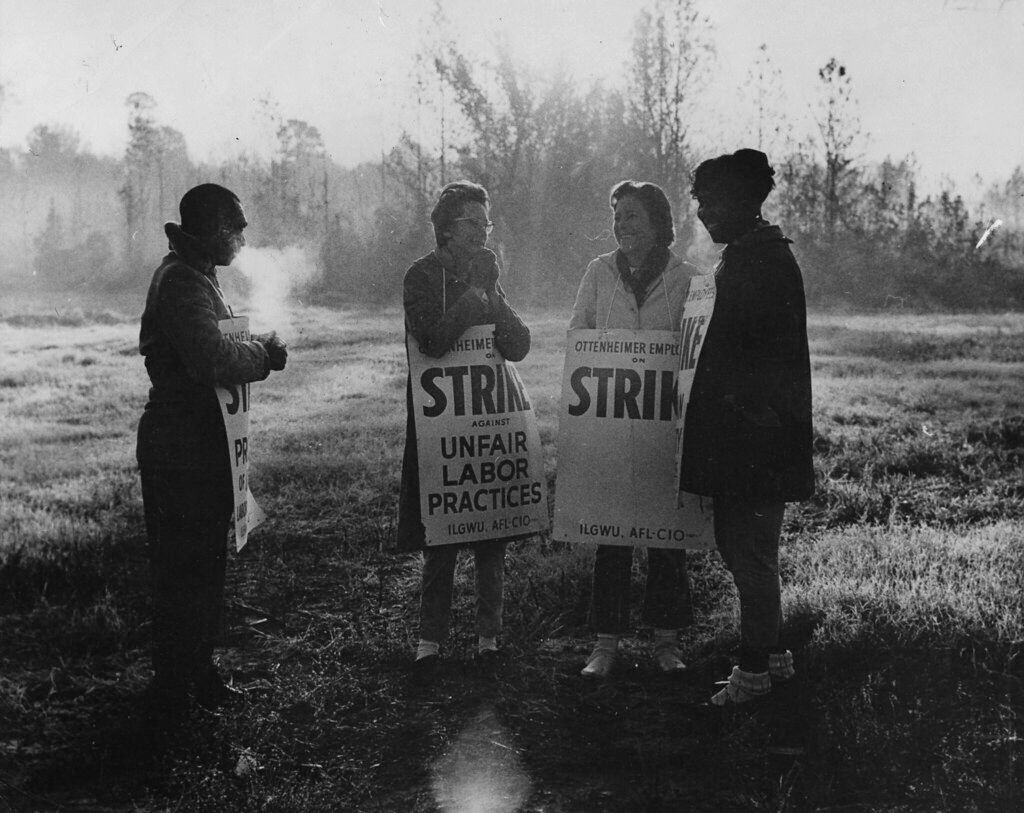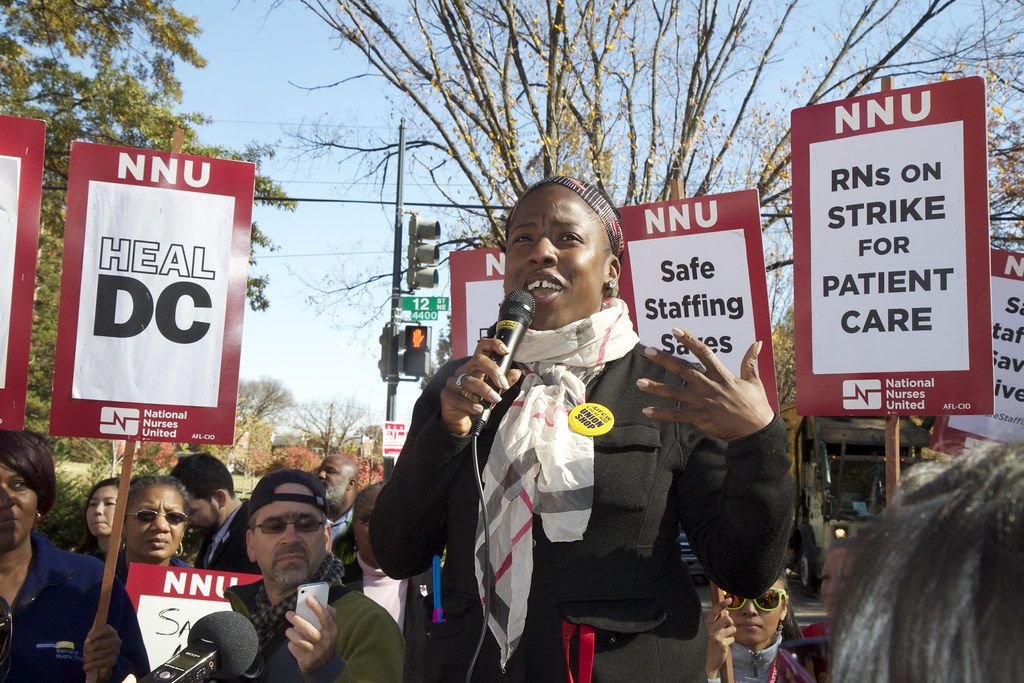What can workers do when their employer refuses to bargain in good faith or respond to pressing workplace issues?
They can file grievances and try to pressure their employers, which can be effective. But when those measures fail, there’s another powerful option: going on strike.
The mere mention of the word can strike terror into the hearts of employers and workers alike. But with careful planning and preparation, strikes don’t have to be so intimidating (to workers, that is. We’re cool with employers continuing to be frightened of them). After all, what good is the best tool workers have if they’re never able to use it?
Here’s what you need to know about going on strike — without striking out.

What to strike over
People don’t strike for the fun of it — there’s always a clear list of demands that employers just aren’t addressing, and a strike is a surefire way to get employers to listen up and negotiate.
Explicitly defining the issues you’re fighting for is important because it leaves little room for employers to offer subpar proposals, and can help you understand what level of legal protection your unit is entitled to.
Once your unit has a crystal clear set of demands and has voted to go on strike, the next step is to set a deadline and notify your employer of your intentions.
So, remember how you had to stay hush-hush when you were first forming a union?
Yeah, strikes are not like that.
Why? Well, it’s one thing to say you intend on doing something, it’s quite another to spell out exactly when it will happen and demonstrate that you’re fully capable of wreaking havoc on a company’s profits and image. The mere possibility of a strike can send employers scrambling to come to an understanding with workers.
Plus, the National Labor Relations Act politely asks that workers notify their employers 60 days before going on strike. Without that 60-day advanced notice, workers won’t receive legal protections under the NLRA and may be fired or disciplined for going on strike — unless they’re striking over unfair labor practices.
This “cooling-off period” means that a strike is on the horizon, but it doesn’t have to be. The employer should meet with the union’s bargaining representative to try to come to an agreement. At the end of 60 days, if workers aren’t happy with the way their employer has responded, they can carry on with their plan to strike.
Workers aren’t the only ones who have to give notice if work is going to come to a screeching halt. Employers have to notify the union if they’re going to implement a lockout.
Wait. What is a lockout?
Short answer: A lockout is when employers attempt to show their power by barring workers from doing their jobs.
Long answer: Employers can lock workers out when they’re negotiating a new contract with the union or when a striking union is set to come back to work. It’s their way of flexing their strength, but there are limits.
Depending on the state, workers can get unemployment when they’re locked out. Once the lockout ends, union members have to get their jobs back, which means replacement workers can’t take jobs away permanently. Also, if an employer engages in any unfair labor practices leading up to the lockout, unions can make a case to the NLRB and receive back pay — so keep careful tabs on what employers are up to in the 60 days prior to the lockout.
While employers may pat themselves on the back for this move, lockouts can, in some cases, actually benefit unions. But in order to make the most out of getting locked out, unions should turn to many of the same strategies they use while striking. That’s why it’s important to have the infrastructure in place that will allow your unit to quickly mobilize.

Preparing to strike
Going on strike isn’t as easy as sending a text to your coworkers telling them that on Wednesday, you’re all wearing pink — and walking out of work.
Rather, your unit is going to need to spend time preparing. Get organized by splitting up responsibilities among committees, with different groups focusing on one area. Here’s a rundown of some groups your group should consider forming, depending on how large your workplace is and how long you anticipate going on strike.
Finance committee: Strikes can be expensive, and spending money while you’re not receiving a paycheck is less than ideal. Union members should prepare in advance to anticipate the lack of income, but there are limits on what people can feasibly save.
Finance committees can help support workers while they strike, by raising donations and allocating a percentage of dues toward members who need assistance with covering rent, transportation, healthcare, and other necessities. These keepers of the “strike fund” can be an economic lifeline.
Negotiating committee: Your unit already has a bargaining committee to facilitate contract negotiations. Lean on their expertise to help your union communicate with your employer and encourage them to bargain in good faith. They’ll be the main point of contact throughout the strike and hopefully, the very productive bargaining meetings.
Public relations committee: When on strike, you’re going to need support, and not all of it needs to be internal. By putting a few union members in charge of PR, your unit can spread the message of why you’re striking to the community. Get press involved! Gaining the goodwill of your community will make your employer sweat and think twice about skipping out on important negotiations or refusing to meet demands. So reach out to news outlets, other nearby unions, influential public figures, politicians, and other leaders in your community.
It’s also important to keep every member of your actual unit engaged before and during a strike. Strikes are stressful, so keeping up momentum is vital. There’s nothing like good press to further hit home every reason for striking to help keep strikers’ morale high.
Picketing committee: Not every unit that strikes is going to want to picket, but many do. To organize a successful picket or demonstration, you’ll need some leaders. After all, making signs, mapping out safe areas to picket (read: not directly in front of a building’s entrance), and communicating expectations to all picketers is a full-time job! It’s important that everyone is clear on the ground rules of picketing to ensure safety and maximum effectiveness, and that messaging should be streamlined and come from one designated source.

A striking success
In an ideal world, all of the work that goes into striking will pay off when your employer gives in and negotiates fairly, eventually meeting workers’ demands.
A strike ends when the employer submits a proposal to the unit. Naturally, the unit will vote on the proposed changes and if they should end the strike. Depending on which way the vote goes, bargaining will continue or the strike will end with a sparkly new contract.
Phew!
Then what happens?
You celebrate! Then, the dust begins to settle a bit. You return to work, sure, but things aren’t quite the same: You have a few more of those benefits you fought for, your bonds with your coworkers are stronger than they’ve ever been, and your employer understands that your unit is a force to be reckoned with.




